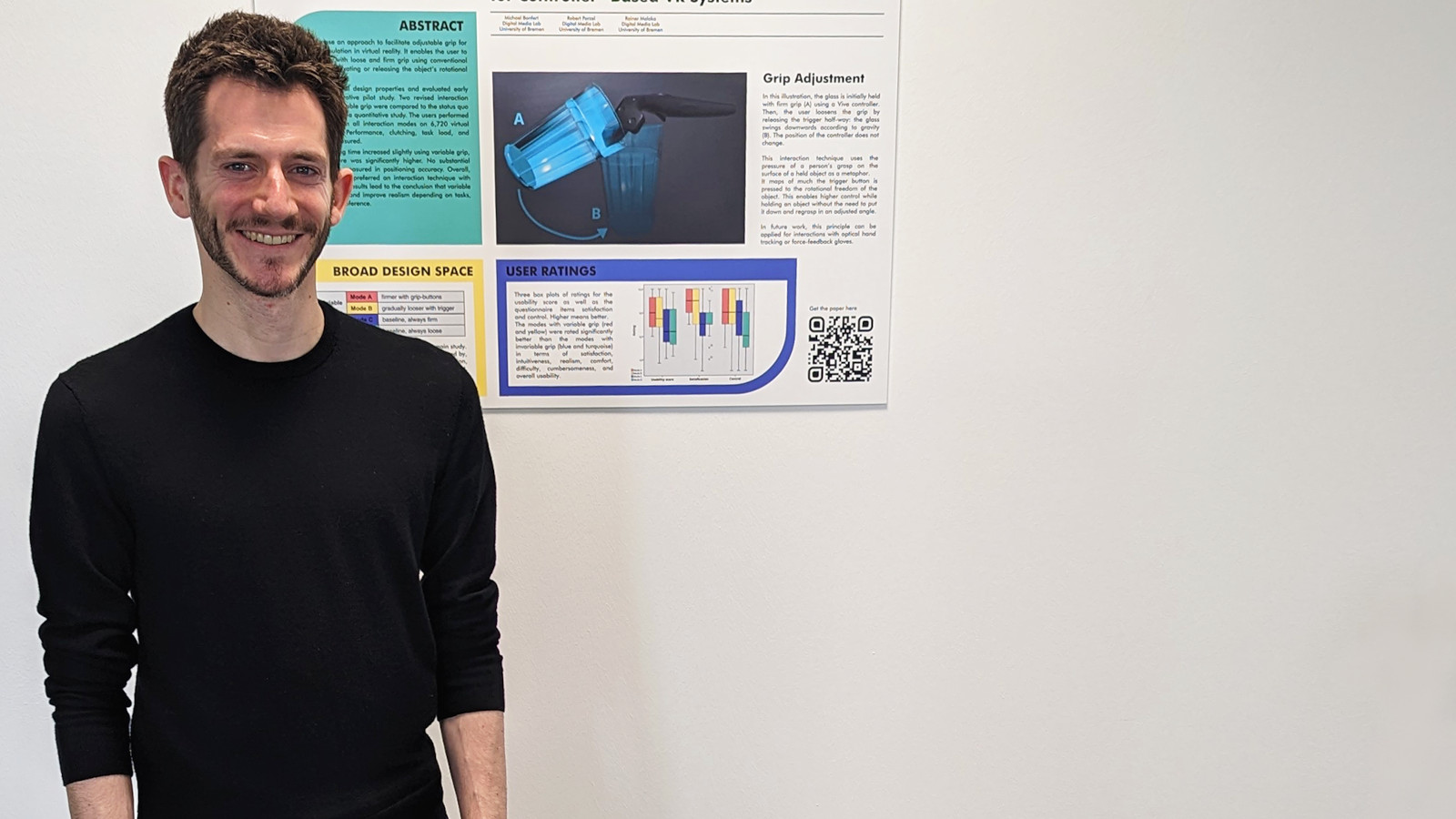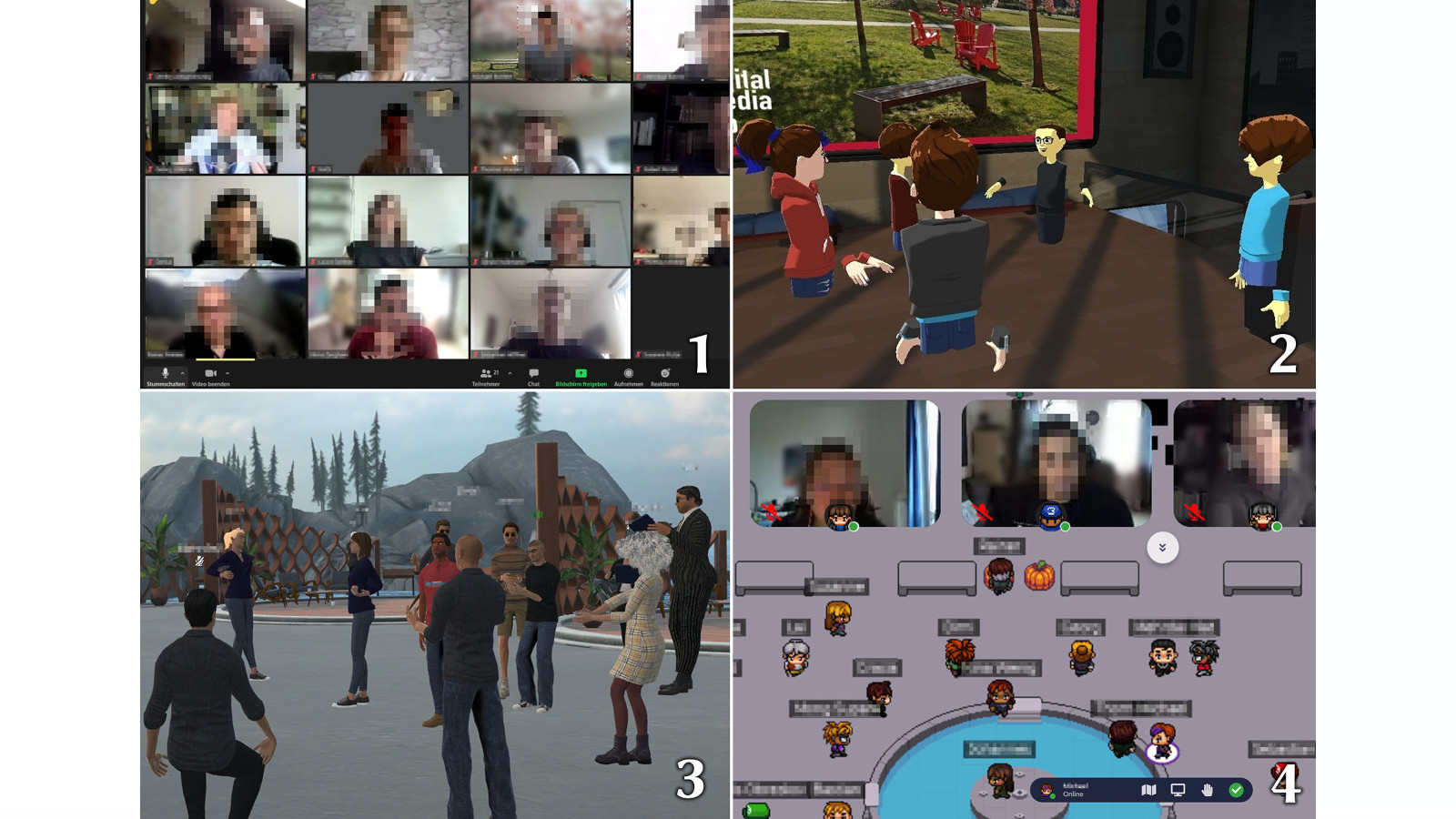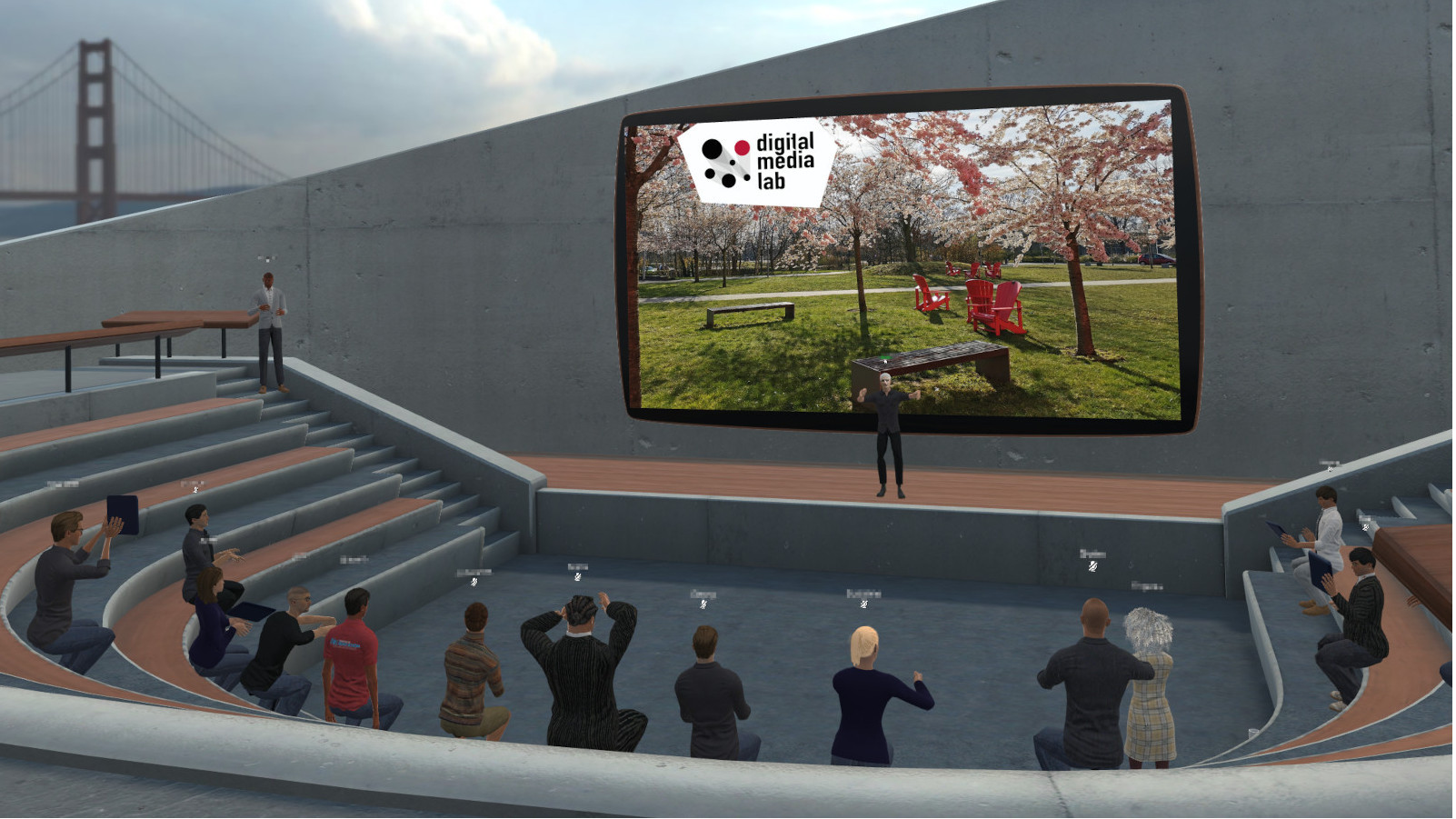
© Uni Bremen
What Does Virtual Reality Feel Like?
Michael Bonfert on the haptics of virtual realities and the subtleties that need to be considered
What does Virtual Reality feel like? And what impact can this technology have on our everyday lives? Michael Bonfert, researcher in the field of virtual realities – VR for short – at the University of Bremen, is intensively involved in the haptics and application of VR. In an interview with up2date. he talks about his work and his prediction for the future of this technology.
Mr. Bonfert, you are professionally involved in researching virtual realities, especially how they feel to users. How did you come to do this?
During my master’s degree program at the University of Bremen, I quickly realized that interacting with well-designed software or objects is very close to my heart. I have always been fascinated by the fact that some technical things can be integrated into everyday life smoothly while others always feel awkward. For example, if someone wants to walk through an automatic door and falters, it is because of the door, not the person. It is important to me that people are happy and satisfied when they interact with a system. During my studies, I was involved in a project in which we developed a VR game during an empirical study. I was particularly excited about interacting with these virtual worlds in three-dimensional space. Building on this, I specialized further and ended up here at the Digital Media Lab at the University of Bremen.
And how do you think VR feels?
Imagine a screen being stretched in front of and next to your face, and with every movement, it just comes along. But you actually have to experience for yourself how impressive it feels having a world surrounding you which does not correspond to our reality. It is different from using a smart phone, where your eyes are focused on a screen. Here, you are immersed into the world on screen and it feels real. Especially because the things there can be touched. This makes that world look very real and impressive. Actually, we have only been able to create such convincing realities for less than ten years, although research has been going on for decades. This means it is just starting to get really exciting to deal with VR and to do research on it.
What do you mean by saying it is just starting to get exciting to deal with the topic of VR?
Because by now, the topic is no longer approached just hypothetically, but the foundation is being built for an everyday use of virtual reality. By everyday use, I mean in areas such as professional trainings or meetings that could be simplified by moving them to the virtual space. This could make such meetings more personal in the long run. But it goes beyond that as well, because here in the Digital Media Lab, we develop applications for preparing medical surgeries, for example. It involves surgery preparation via virtual reality in order to train surgical procedures, but also to improve cooperation between the staff involved. During the COVID-19 pandemic, we also conducted a study on telecommunications. We held our Lab meetings in virtual realities and looked at what impact this had on participants.

© Uni Bremen

© Uni Bremen

© Uni Bremen
And what were the results?
To explain this, I must first describe the setting. We compared three scenarios. The first scenario is the status quo, a typical video conferencing situation with common video conferencing tools such as Zoom. The second scenario was a hybrid solution in which participants could use a keyboard to make a 2D avatar walk around a virtual environment. When people approached each other in the 2D world, in turn, a video feed would open up. In the third scenario, the attendees used VR glasses and were avatars, which actually faced each other in a 3D world. Especially because it was during the time of the pandemic, people had the desire to approach each other physically and sometimes hug each other. Interestingly, the interpersonal distance in the real world transfers also to virtual interactions. When another participant was suddenly standing what felt like only a few inches away from me, it felt similarly uncomfortable, as if someone in the real world would have been violating those natural distances.
Would you say that the 3D avatar scenario has come close to a face-to-face meeting?
If you disregard the facial expressions, it most closely resembles a face-to-face meeting. In our study, we did not have VR headsets that were able to read any form of facial expression. Therefore, the participants always saw the same facial expression during the entire meeting, which was very odd. Imagine someone talking very matter-of-factly while having an artificial grin on their face the whole time. It was the standard facial expression of all avatars and made these meetings feel very unnatural. This is why the study is entitled “Seeing the Faces Is So Important.” For this reason, among others, many participants gladly switched back to classic video conferencing tools after the end of the study. Overall, there is still much research to be done in this area for the experience to actually feel real and to become suitable for everyday use.
Virtual Reality at the University of Bremen
If you want to learn more about VR at the University of Bremen, take a look at the work of the Digital Media Lab. The Digital Media Lab is a research institute specializing in the creation and enhancement of digital media technologies. Its work encompasses a variety of disciplines, including Natural User Interfaces (NUI) for Augmented Reality (AR) as well as Virtual Reality (VR), semantic technology, Games User Research, Human-Computer Interaction (HCI), and Usable Security & Privacy. The lab focuses on improving and redefining the way people interact with and use digital media. Its researchers use the latest technologies and methods to enable a better understanding and experience of digital media and user interfaces. The lab’s work goes well beyond technical developments and includes exploring the impact of digital media on human behavior and digital safety. Supported by foundations and institutions, the Digital Media Lab works to shape and understand the next generation of digital media and its application.